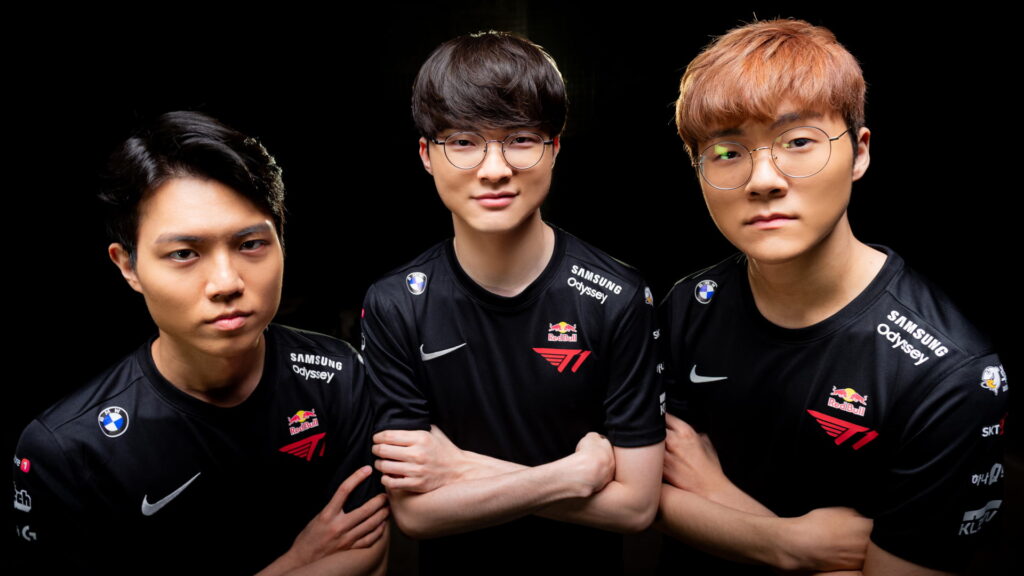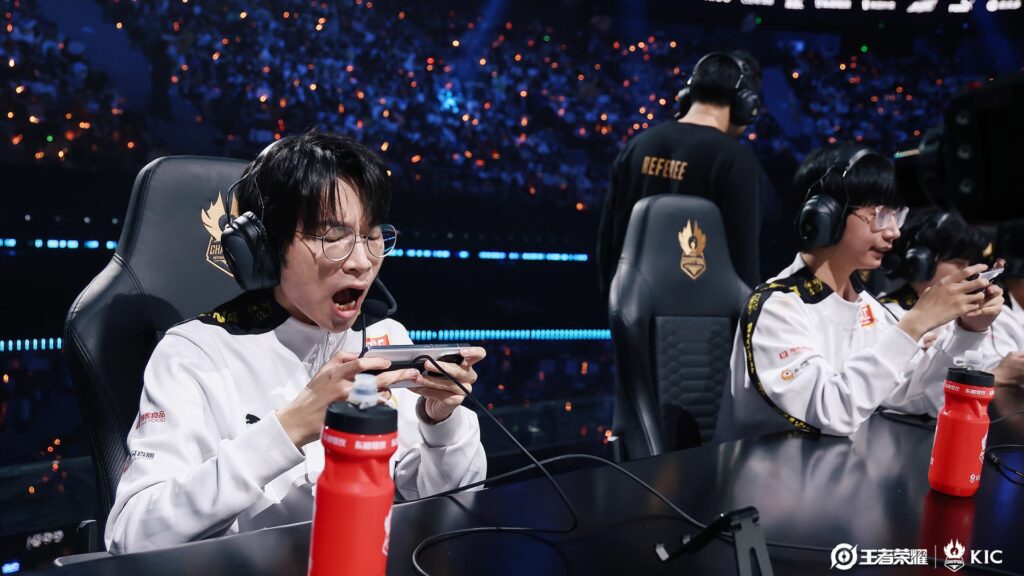
TL;DR
- A growing body of research suggests professional esports athletes are at risk of gaming-specific injuries and mental burnout.
- The unique nature of competitive gaming brings health challenges that traditional sports rarely face.
- Joint and musculoskeletal pain, repetitive motion injury, and eyestrain are just a few of the complaints esports players frequently report.
- But it’s not all bad. Esports competition also increases the volume of grey matter in the brain, improves problem-solving, and lifts short-term memory.
There’s no denying the immense physical and mental challenges placed on esports athletes. Matches are sweat-inducing and adrenaline-packed, but there’s no escaping that most of the action happens on-screen. A new study shows that esports athletes have lower lean body mass (LBM) than their non-gaming peers.
That’s a worry, as LBM is correlated with obesity, diabetes, and chronic health conditions. Esports athletes are also more susceptible to ailments like wrist pain, forearm sprains, neck and back issues, and eye fatigue.
Is it time to inject more athleticism into the sport? We look at what the industry is doing to address aerobic fitness, mental health, repetitive injury prevention, and ensure both minds and bodies are fit for the next match.
An apple a day
There’s a lot of conventional wisdom out there suggesting that competitive gaming, in fact, all gaming, is a net negative for physical health.
If you play esports, you’ve heard it all before: too much time spent sitting, not enough calorie burn, bad posture, sciatica, gamer’s thumb, and carpal tunnel.
Sadly, some of those stereotypes are turning out to be true. Sitting for hours on end, immersed in gameplay, does take a toll on the eyes, arms, neck, and back. And then there’s the mental strain of the competitive schedule. Esports players are often in their teens and spend much time away from home. They live in the public eye and travel extensively. Burnout is a recurring theme, and it’s common for players to retire at an early age.
Consider the well-publicised case of League of Legends prodigy Kyle “Danny” Sakamaki. The Evil Geniuses star had to exit the LoL Championship Series in 2022 and take a mental health break, leaving the team to fend off accusations that it hadn’t been supportive enough of its then-17-year-old star.
cause playing 5 straight months of competitive league of legends with scrims, riot features, official matches, lock in, regular LCS season, playoffs, houston finals, MSI, group stage, rumble stage, semis, and erryone hates u.. man i would really like to take a small break
— Dan (@realdannylol) May 27, 2022
A demanding job

Professional esports players can train six days a week for eight to ten months of the year, with off-season breaks dictated by regional and international league schedules. Team practice sessions typically start with warm-ups focused on aiming in a computer program or mini-versions of the game being played.
Teams also engage in friendly matches called scrims against other teams. Depending on the game, an esports player may have four to seven scrims to complete each day and play for up to six hours. Once formal practice is over, players often keep going, practising specific skills or moving independently.
That’s all done to support match schedules, which can vary by league. In League of Legends, for example, the competitive season is split into two halves, and each has a playoff bracket plus international competitions once the regular season is complete. By contrast, league scheduling for Counter-Strike matches is more variable. It’s normal for teams to travel to global competitions, spending more than half the year on the road.
Players face a lot of stress. Their performance is constantly scrutinised by fans, journalists, and gaming influencers, and it is laid bare on social media. Thrust into the limelight and frequently separated from home and family, it’s an open question whether players with an average age of 18 get enough formal support from teams and league organisers.
Stressing over mobile

Esports teams and tournament organisers work hard to ensure ergonomic game setups, with posture-supporting chairs and monitors designed to minimise eye strain. However, esports is shifting to consoles and mobile devices. Research points to additional concerns for players who favour the handheld experience.
More than 90% of mobile esports athletes in the study reported eye strain and fatigue, while more than 30% reported headaches and rhinitis (nasal issues).
Researchers noted that mobile esports create postures that differ from desktop play. Mobile esports: “happen in different environments, with different player–environment interactions than computer-based gamers.”
Smaller screen size, viewing angles, and finger, hand, and arm motions combine to ‘create different postural adaptations, muscle fatigue/strain, and repetitive injury patterns after prolonged and high-intensity training.’
Whether on PC or console, gaming stresses the small muscles of the hand and wrist. Injuries typically start small and intensify over time, leading to dull pain or transient numbness. With their training loads and match schedules, esports players are at acute risk, suffering performance losses or having to leave games entirely due to pain and discomfort.
Role of performance coaches

Esports organisations and government bodies are aware of these issues and are taking steps to address them. Part of the response is to do what traditional pro teams have done and hire performance coaches.
Unlike game coaches who focus on improving strategy, skills, strength, and speed, performance coaches look at the bigger picture. Their role is to sustain players’ overall well-being and ensure they are mentally and physically prepared to handle the rigours of pro gaming.
They help players develop techniques for handling stress in high-stakes environments and staying calm and focused during matches. They also work on physical fitness, creating individual workout regimens designed to improve posture, enhance reflexes, and reduce fatigue. The objective is to make players more resilient and maintain their edge, even under intense pressure.
Another key aspect of the role is maintaining team morale and helping resolve inter-team conflicts. In a blog post for the International Olympic Committee, esports performance coach Fabian Broich says it’s vital for esports teams to teach players how to balance individualism and teamwork.
“As an Esports player, you master a specific game through daily practice at home — alone. You will gain recognition and attract teams’ attention as you climb the ranks in ladders or in-game leagues. Although you have mastered the in-game skills, further development of team-oriented skills is likely needed due to the solitary nature of playing from home.”
Physical training needs
They say health is its own reward, but staying mentally and physically fit can also affect match outcomes.
A 2019 survey found that 80 per cent of esports athletes believe staying fit strengthens gaming performance. A 2020 study published in the Journal of the American College of Sports Medicine found that 15 minutes of high-intensity interval training (HIIT) ahead of an esports match improved the accuracy of players’ attacks by 75 per cent.
Experts say there are three main physical fitness benefits for esports athletes:
- Step 1: Avoiding missed matches due to illness or repetitive strain injuries
- Step 2: Improving reaction time and cognitive function
- Step 3: Building endurance for longer matches and overall resistance to stress
Adopting even a simple exercise regimen can improve all three. Experts suggest a weekly routine incorporating strength and resistance training, cardio, and flexibility/mobility exercises.
Conclusion
It’s easy for outsiders to dismiss esports on health grounds. They’re loud and intense, involve a lot of sitting and repetitive motion, and cause players to experience sustained mental and musculoskeletal stress.
But consider the upsides. A 2023 study in Sustainability challenges at least some of the conventional wisdom about esports’ inherent unhealthiness. It found that players who take intermittent breaks and maintain a standardised sitting posture during gameplay have a lower incidence of neck and back pain.
It can also make your brain bigger.
Jane Konidis, MD, a physiatrist at the Mayo Clinic, wrote recently that after a few weeks, ‘studies have shown that esports players demonstrate an increase in grey matter volume and activation in the prefrontal cortex, both of which correlate with improved performance.’
She notes that better cognitive control is also evident among some gamers, leading to enhanced problem-solving and short-term memory.
Gaming is different. Despite parallels with traditional athletics, esports has its own stresses, demands, strengths and shortcomings. It also offers unique benefits. While teams and coaches work to protect players’ physical and cognitive health, it’s fair to push back on conventional wisdom and blanket negativity.
FAQs
Studies have found negative health outcomes from extended esports playing, including reduced lean body mass (LBM), vision problems, sleep disturbances, excessive stress, musculoskeletal pain, and weight gain.
Depending on the complexity of gameplay, esports players have to think quickly and strategise on the move. Competitive video gaming can stimulate deeper parts of your brain to improve critical thinking skills.
Researchers say the most common esports injuries are wrist, forearm, neck and lower back pain caused by repetitive strain or nerve entrapment.
References
- Library of Medicine)
- Direct)
- Medicine)
- Williams & Wilkins)
- Clinic)
The post Inside esports health issues: Are pro gamers doing okay? appeared first on Esports Insider.




